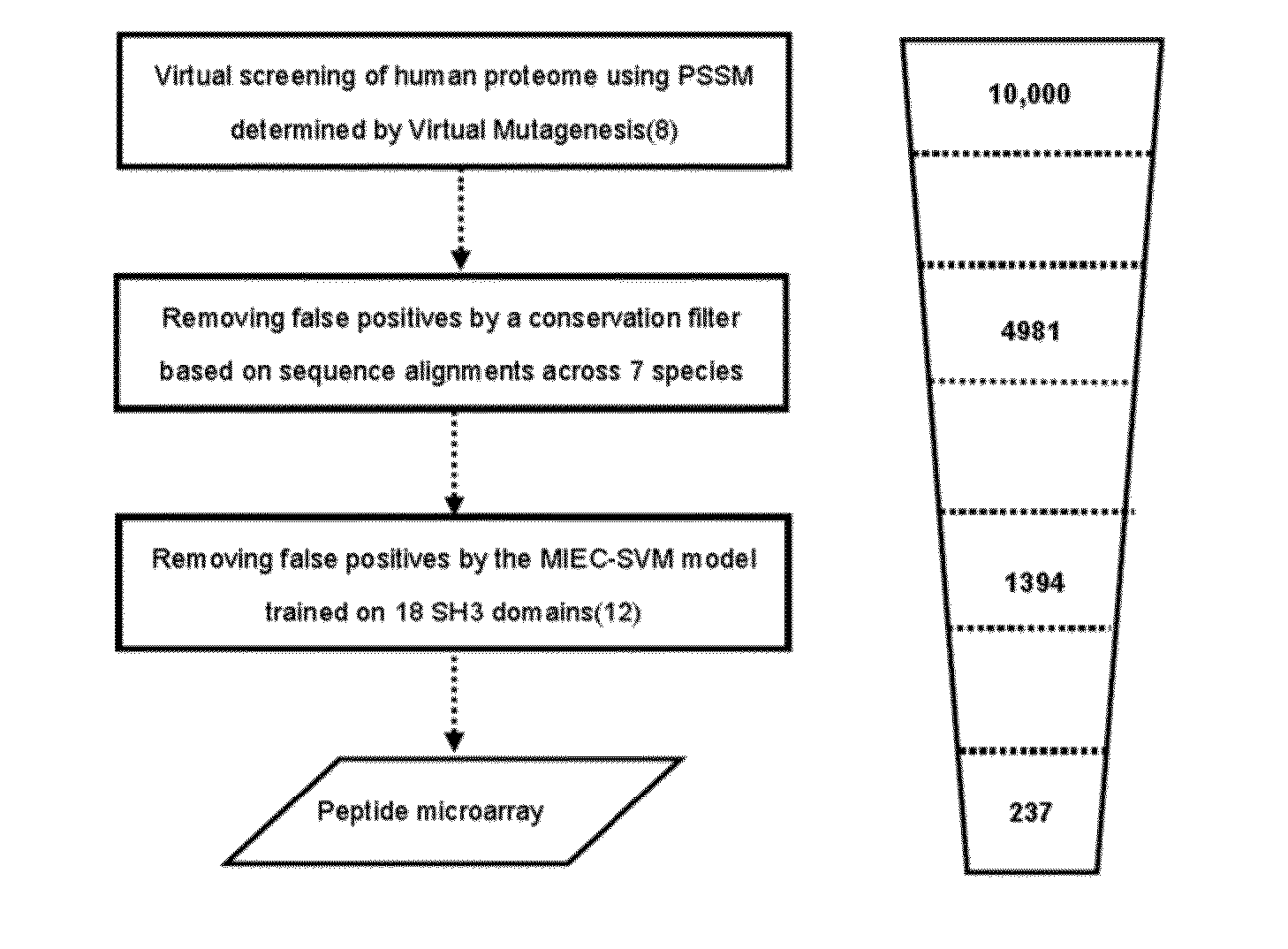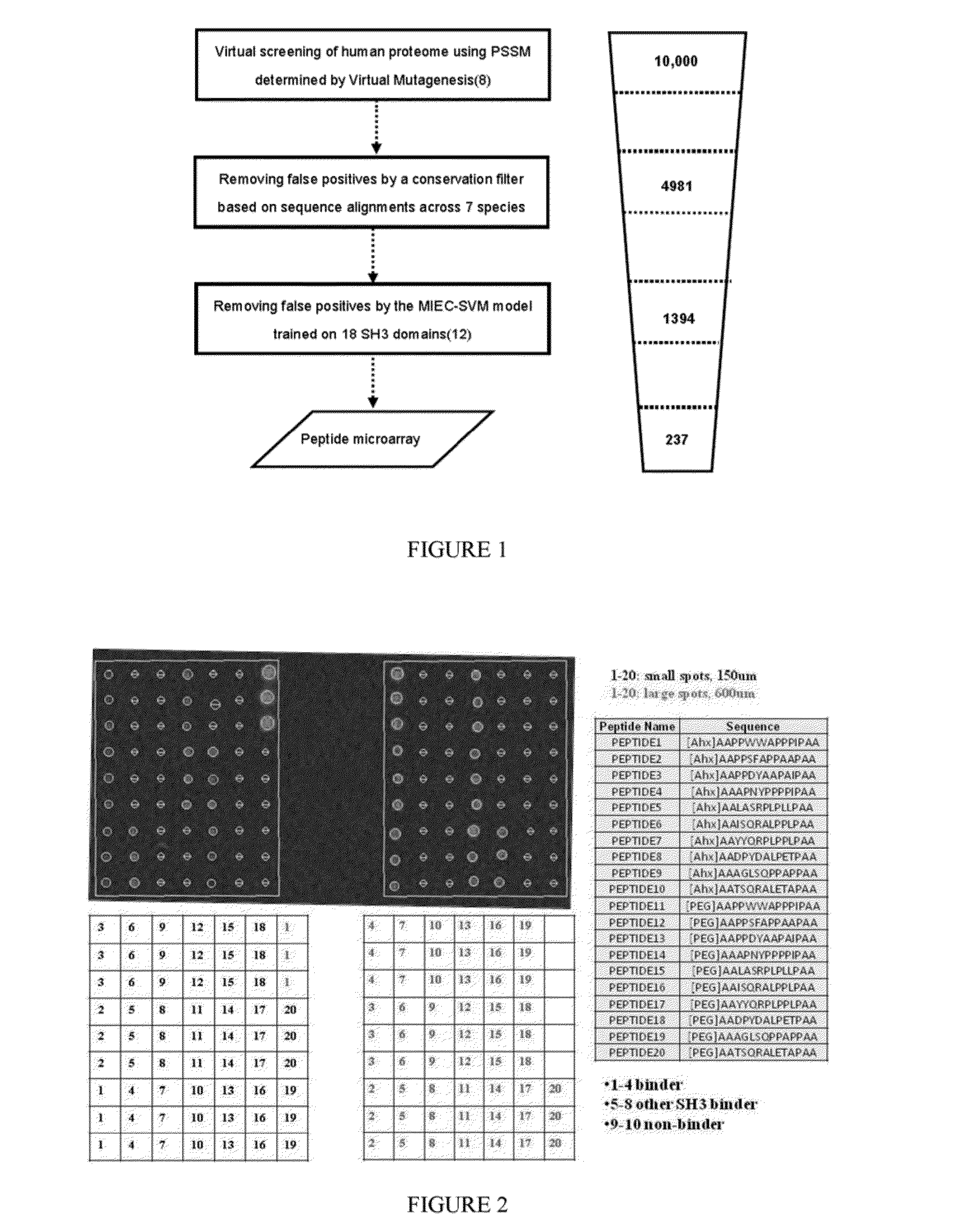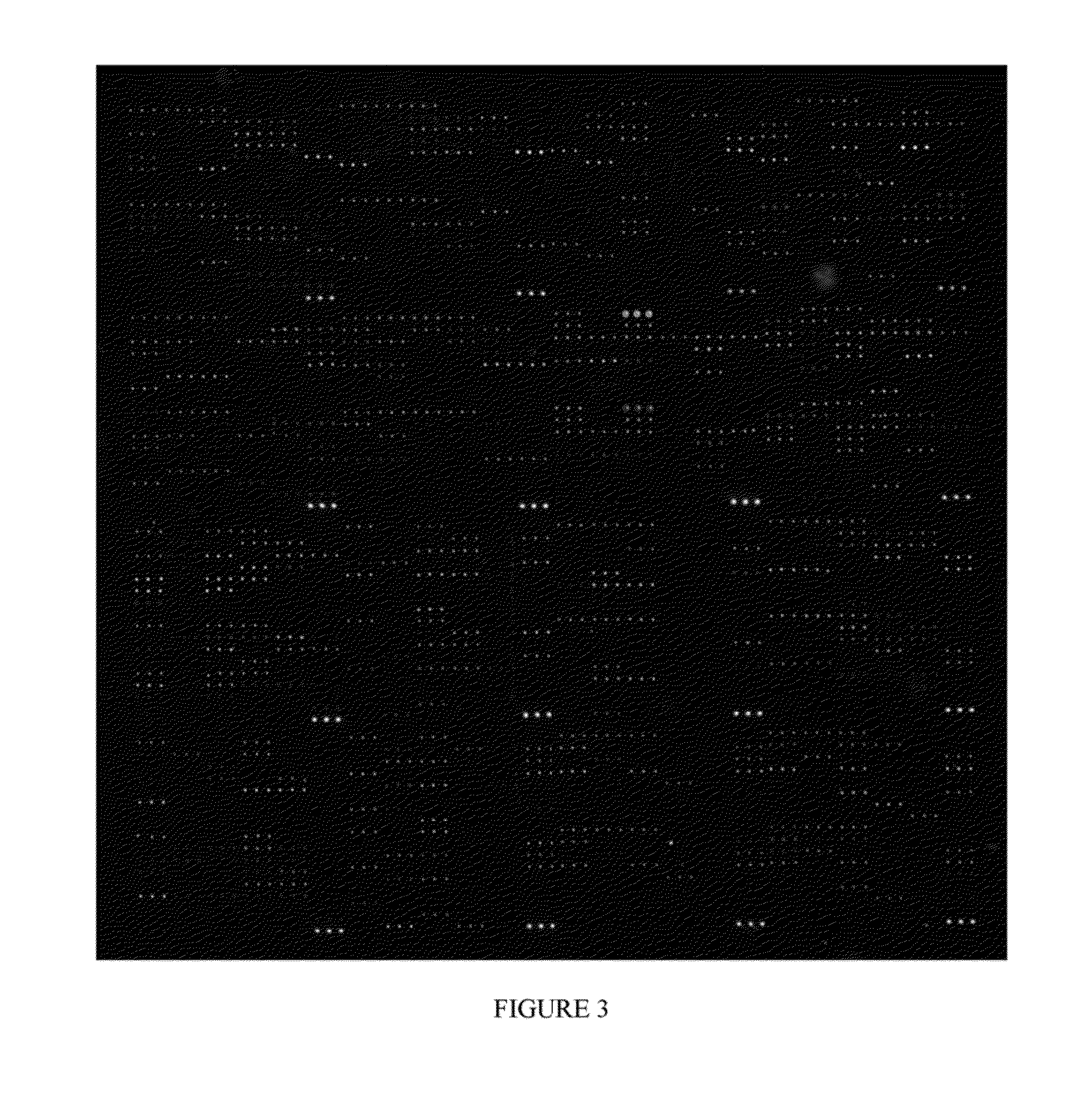Peptide microarray and method of use
a technology of peptide microarrays and peptides, applied in the field of peptide microarrays, can solve the problems of limited quality control options, batch-to-batch variation of peptides synthesized directly on the surface, and limited spotting of peptides onto the support surface, so as to restrict the ability to scale up for proteomic measurements, and the effect of reducing the number of peptides
- Summary
- Abstract
- Description
- Claims
- Application Information
AI Technical Summary
Benefits of technology
Problems solved by technology
Method used
Image
Examples
example 1
Proteome-wide Detection of Abl1 SH3 Binding Peptides by Integrating Computational Prediction and Peptide Microarray
Introduction
[0042]The human tyrosine kinase Abl1 plays important roles in signal transduction and interacts with a broad variety of cellular proteins (1, 2). Fusion of the break-point cluster region (BCR) and ABL genes form the oncogenic BCR-ABL, which is causally linked to certain human leukemias (3). The Abl1 protein consists of several modular domains, including one SH3 and one SH2 domain that form intra- and inter-molecular interactions to regulate its kinase activity (1, 2). Although many interacting partners of Abl1, such as Abi1, Abi2 and Rin1, have been reported (2), a proteome-wide identification of those mediated by the weak and transient SH3-peptide interaction is still incomplete and remains a challenging problem.
[0043]High throughput technologies such as yeast two-hybrid and protein complex purification in conjunction with mass spectrometry have greatly fac...
example 2
The Recognition of Methylated Peptides by Drosophila melanogaster Polycomb Chromodomain Abstract
[0129]Lysine methylation is one of the important post-translational modifications (PTMs) that regulate protein functions. Up to date, proteomic identification of this PTM remains a challenge due to the lack of effective enrichment methods in mass spectrometry experiments. To address this challenge, a systematic approach was presented here to predicting peptides in which lysine residues may be methylated to mediate protein-protein interactions. The chromodomain of the Polycomb protein in D. melanogaster was used as a model system to illustrate the success of this approach. The molecular dynamics simulations and free energy analyses were started on the histone peptides complexed with the Polycomb chromodomain to understand how the binding specificity is achieved. Next, virtual mutagenesis was conducted to quantify each domain and peptide residue's contribution to the domain-peptide recognit...
PUM
| Property | Measurement | Unit |
|---|---|---|
| dielectric constant | aaaaa | aaaaa |
| dielectric constant | aaaaa | aaaaa |
| dielectric constants | aaaaa | aaaaa |
Abstract
Description
Claims
Application Information
 Login to View More
Login to View More - R&D
- Intellectual Property
- Life Sciences
- Materials
- Tech Scout
- Unparalleled Data Quality
- Higher Quality Content
- 60% Fewer Hallucinations
Browse by: Latest US Patents, China's latest patents, Technical Efficacy Thesaurus, Application Domain, Technology Topic, Popular Technical Reports.
© 2025 PatSnap. All rights reserved.Legal|Privacy policy|Modern Slavery Act Transparency Statement|Sitemap|About US| Contact US: help@patsnap.com



